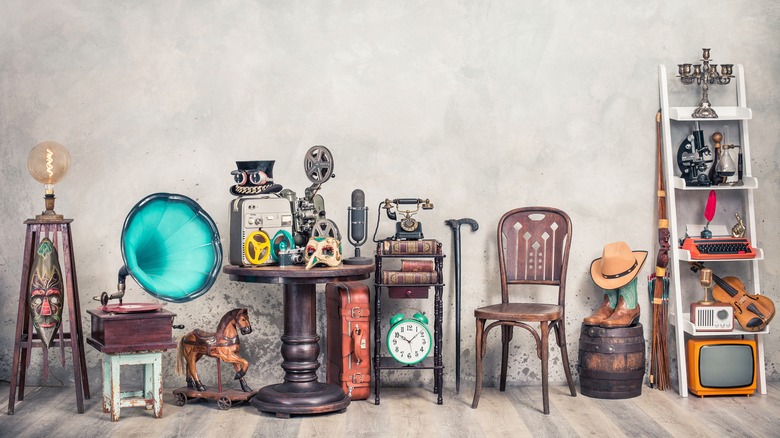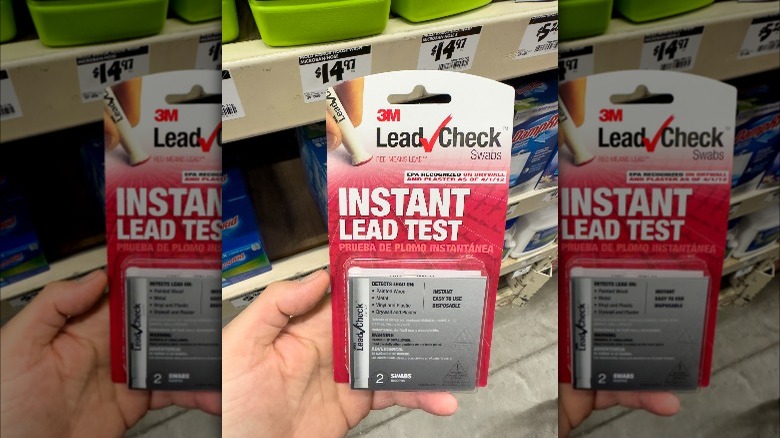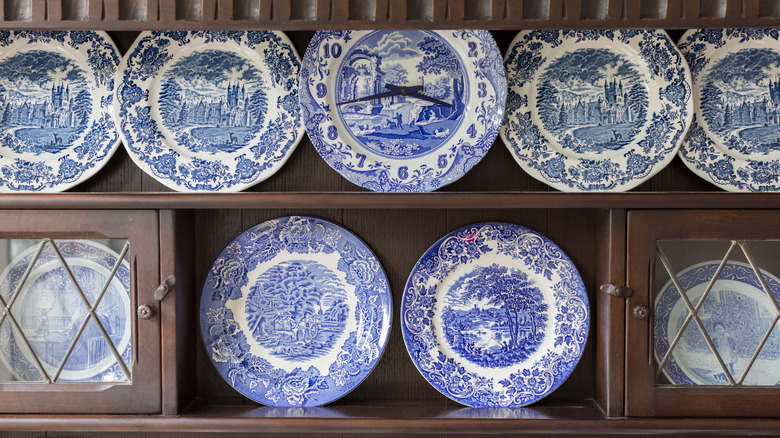Antiques And Lead Exposure: What To Know Before Bringing Home Vintage Items
We may receive a commission on purchases made from links.
Sourcing home décor and furniture secondhand is a great way to save money and reduce your carbon footprint, as well as a fun hobby for many. Antique items certainly have a level of charm and uniqueness not often found in modern counterparts, but you run a few risks when shopping for vintage goods.
While most people are concerned with bringing home bed bugs or moths from their vintage finds, there's a much more dangerous issue at hand — lead. The dangers of lead paint are now readily known, but before 1978 it was used inside homes, on furniture, decorations, dishes, and more, per the Centers for Disease Control. If you live in an older home, you've likely already run tests for lead paint, but what about your antiques? Vintage goods can often contain traces of lead that are dangerous if not handled properly. For anyone concerned about items in their home, there are quick and effective ways to test for lead, as well as precautions to take when working with items containing the dangerous toxin.
Testing for lead
Unless specifically marked as lead-free, you should be checking each and every item you get from vintage, antique, and thrift stores, as well as garage sales, flea markets, and so on, for lead. Specifically, dishes, crystal glassware, hardware, jewelry, painted furniture, and toys, notes the Minnesota Department of Health. There are a few signs of lead to keep an eye out for. Many people love the weathered paint look on older antiques, but chipped and/or crinkled paint is one of the primary signs that it may contain lead. That isn't to say all chipped paint contains the toxin, but it's a good indicator. Similarly, any item made before 1978 without an explicit lead-free label should be approached cautiously.
There are a few ways to confirm whether or not there is lead present in your vintage goods. One affordable and convenient way is with a home testing kit, like the one pictured above from 3M; it's available on Amazon for $12. Kits like this only require you to swab the test on an item in question, and it will turn red if it contains lead. However, these tests aren't always accurate, so do your research beforehand. Other testing options include sending samples to a lab or calling in a professional to come test your entire home for lead. This is especially helpful for those living in older homes or those with lots of antique fixtures and furniture.
What to do with antiques that contain lead
Let's say you test your antiques for lead and some of them come back positive. What's the big deal and what should you do now? Prolonged exposure to lead is not to be taken lightly. Symptoms include headaches, memory loss and confusion, shifts in mood, high blood pressure, pain in your joints, and pregnancy issues, explains the Mayo Clinic. More worrisome is lead poisoning in children, who are more susceptible and experience severe symptoms including seizures, developmental issues, and hearing loss.
The presence of lead doesn't necessarily mean you have to get rid of the item, but rather stop using it. Dishes, ceramics, antique dolls, and so on, can be displayed instead of used, for example. Or, if you have a piece of furniture or décor containing lead that's weathered or chipping, you can seal it and use it for purely decorative purposes. If you have a crystal decanter that contains lead, don't store anything in it. Be wary of stripping or sanding lead-based paint, though, as the lead could settle deeper into the furniture, or you could create lead dust. When cleaning lead items, wear a mask, gloves, and disposable clothing for safety, and wash your hands often and thoroughly. If you have items that came up positive when testing for lead and you have children in the house, play it safe by either getting rid of those items or locking them up in storage until the kids are older.


